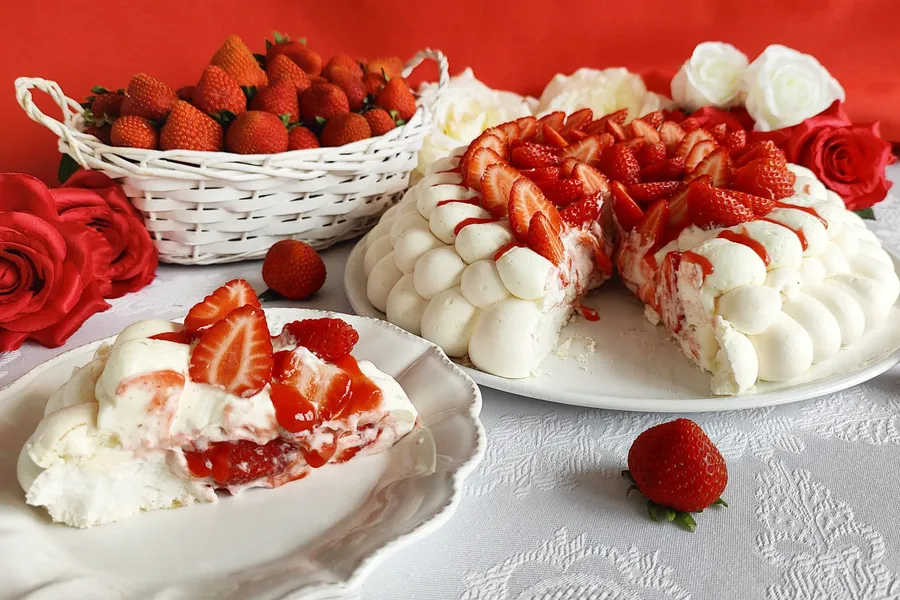
The history of Pavlova cake
The Pavlova cake is an iconic dessert that combines a crisp meringue shell with a soft, marshmallow-like centre, topped with whipped cream and fresh fruit. Beyond the ongoing debate between Australia and New Zealand over its origin, the creation of this delicate sweet is closely linked to the Russian ballerina Anna Pavlova, whose grace and lightness inspired the dish.
Anna Pavlova (1881–1931) was one of the most renowned ballerinas of the 20th century. Famous for her performance in *The Dying Swan*, she toured extensively around the world, including visits to Australia and New Zealand in 1926 and 1929. Her presence left a lasting impression on the audiences and culture of both countries.
During her 1926 tour, it is said that a chef, moved by Pavlova’s elegance and lightness, sought to create a dessert that embodied those very qualities. The result was a meringue base with a soft interior—symbolising the ballerina’s delicacy—topped with whipped cream and fresh fruit, bringing colour and freshness to the whole.
Preparing a Pavlova demands precision: egg whites are whisked until stiff peaks form, gradually incorporating sugar to stabilise the mixture. Vinegar or lemon juice and cornflour are then added to achieve a soft interior texture. The mixture is baked at a low temperature, allowing the exterior to crisp while the centre remains fluffy.
This dessert has evolved over time, adapting to seasonal fruits and local tastes. In New Zealand, it is commonly topped with kiwifruit, while in Australia, passion fruit or strawberries are favoured. Its versatility and elegance have made it a classic choice for celebrations and family gatherings.

 albertoimizcoz
albertoimizcoz

